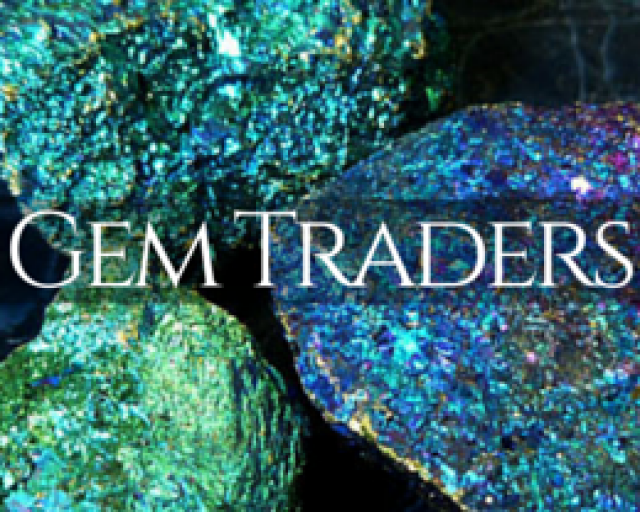You have not bid on this auction.
244GRAMS PARCEL POLISHED ROUGH ZEBRA ROCK GG2047
- SKU
- Dimensions (mm)
- x x mm
- Weight (cts)
- Certified Gemstones
- No
- Colours
-
DESCRIPTION ZEBRA ROCK POLISHED
SOURCE WESTERN AUSTRALIA
SIZE LARGETS 55x40x10MM
PARCEL 10 PIECES AS PER IMAGE
This distinctive reddish-brown and white banded
ornamental stone from the East Kimberley, Western
Australia, has been known as zebra rock since its
discovery in 1924. Some of the original localities,
including one about 4.8km southwest of the former
Argyle Downs Station, are now submerged beneath
the dam waters of Lake Argyle, but there are others
which are still being exploited.
Zebra rock forms lenses and seams, some
extending for kilometres, within the Johnny Cake
Shale, which is of Late Precambrian age (around
670 million years old). The rock is an “argillite” or clay rock. It is largely made up of clay minerals but
also contains tiny angular fragments of quartz and mica flakes, and the mineral, hematite (an iron oxide),
which is the main iron-bearing mineral. Most of the clay is the common mineral kaolinite, which forms
during weathering of rocks (such as granite) containing feldspar and other aluminium silicates and can
be deposited as a sediment in water to eventually make a clay rock like a shale or mudstone.
- SKU
- Dimensions (mm)
- x x mm
- Weight (cts)
- Certified Gemstones
- No
- Colours
-
DESCRIPTION ZEBRA ROCK POLISHED
SOURCE WESTERN AUSTRALIA
SIZE LARGETS 55x40x10MM
PARCEL 10 PIECES AS PER IMAGE
This distinctive reddish-brown and white banded
ornamental stone from the East Kimberley, Western
Australia, has been known as zebra rock since its
discovery in 1924. Some of the original localities,
including one about 4.8km southwest of the former
Argyle Downs Station, are now submerged beneath
the dam waters of Lake Argyle, but there are others
which are still being exploited.
Zebra rock forms lenses and seams, some
extending for kilometres, within the Johnny Cake
Shale, which is of Late Precambrian age (around
670 million years old). The rock is an “argillite” or clay rock. It is largely made up of clay minerals but
also contains tiny angular fragments of quartz and mica flakes, and the mineral, hematite (an iron oxide),
which is the main iron-bearing mineral. Most of the clay is the common mineral kaolinite, which forms
during weathering of rocks (such as granite) containing feldspar and other aluminium silicates and can
be deposited as a sediment in water to eventually make a clay rock like a shale or mudstone.
| Shipping provider | Shipping to Australia | Shipping to rest of world |
|---|---|---|
| FedEx | $12.00 / 3 days | $39.00 / 10 days |
|
Australia
FedEx is discounted to $12.00 on orders with 2 or more items
Rest of the world
FedEx is discounted to $39.00 on orders with 2 or more items
|
||
| Registered Shipping | $9.00 / 7 days | $16.00 / 21 days |
|
Australia
Registered Shipping is discounted to $9.00 on orders with 2 or more items
Rest of the world
Registered Shipping is discounted to $16.00 on orders with 2 or more items
|
||

-
 Positive
PositivePaid and shipped - no feedback left after 100 days
-
 Positive
PositiveJust as noted, nice set of jewelry.
-
 Positive
PositiveReceived the pearls today and they are exactly as described.This seller responded very quickly and was a pleasure to buy from!Will buy more in future!Thank you.
-
 Positive
PositiveBreathtaking stone, perfect packaging, fast shipment, recommendable seller, thank you.
-
 Positive
PositiveBeautiful stone, perfect packaging, fast shipping, recommendable seller, thank you and happy New Year from Germany
-
 Positive
PositiveVery special stone, fast shipment, reliable seller, thanks from Germany.
Why are users outbidding themselves?
When a bid is placed, this is the maximum amount a person is willing to bid for the product. Our system will then automatically bid on behalf of the bidder, incrementally increasing the bid up to the maximum to maintain their position as the highest bidder.
When there is an icon indicating 'Automatic Bid', it means our system is actively placing bids for the bidder based on their maximum bid. This may appear as if bidders are outbidding themselves, but it's simply a result of the system updating the bid to reflect the bidders maximum limit.














